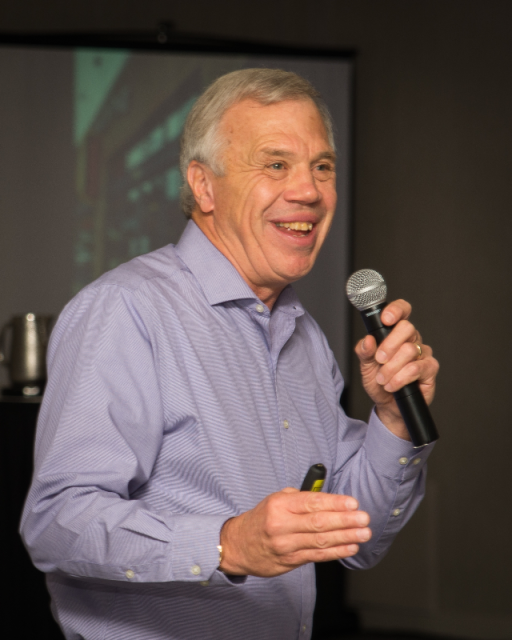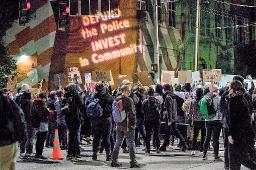
Jim Diers is driven by a passion to get people more involved in their communities and in the decisions that affect their lives. Over the past 40 years, he has served as a grass roots community organizer, community developer, and founding director of Seattle’s Department of Neighborhoods. Jim now shares the lessons from that work in his courses at the University of Washington; in international consulting through the Asset-Based Community Development Institute; and in his book, Neighbor Power. He has been recognized with an honorary doctorate from Grinnell College and as the Public Employee of the Year by the Municipal League of Martin Luther King County.
State or Province:
country:
USwhat are your gifts and talents?:
why do you want to join abcd in action?:
Moving from Police to Community

Confronted by unanticipated expenses and greatly reduced revenues due to COVID-19, local governments are searching for a way to balance their budgets. Fortunately, Black Lives Matter is showing a path forward with its demand: “Defund the Police, Invest in Community.”
The Great Recession of 2008 was the last time local governments faced such a major budget crisis, and the general response was, “We need to get back to basics.” In most jurisdictions that meant cutting “soft” programs like community development so that they could continue to fund “essentials” like police at a continuing or increased level.
A few local governments, however, took a very different approach. They argued that there is nothing more basic than community. They recognized that neighborhoods aren’t just places with needs but communities of people with tremendous and underutilized skills, knowledge, energy, relationships and other resources. There was an understanding that communities have a unique and crucial role to play in addressing issues of safety, care, resilience, health promotion, environmental stewardship, economic sustainability, social justice and democracy itself. They invested in community because that is how they could leverage additional resources and make the biggest difference.
This latter approach is being taken much more seriously now due to the uprisings throughout the United States and beyond that were triggered by the killing of George Floyd but are a response to the ongoing epidemic of institutionalized racism. Elected officials are starting to take a hard look at police budgets that have skyrocketed over the years with little scrutiny. There are asking: Why does law enforcement trump other needs? Are there better ways than law enforcement to achieve safety? What are the opportunities for more community-based solutions?
With their demand to “Defund the Police,” Black Lives Matter has drawn attention to the huge but previously sacrosanct budget for law enforcement. An Urban Institute report documented that state and local inflation-adjusted spending on police and corrections in the United States more than tripled from $60 billion in 1977 to $194 billion in 2017. It is questionable whether these additional investments have made people, especially Black people, feel any safer.
Seattle Times columnist Naomi Ishisaka recently noted that the $400 million the City of Seattle “spends on policing is more than the general funds we spend on arts, culture, recreation, health, human services, neighborhoods and development combined.” As Barack Obama has reminded us, “a budget is an embodiment of our values.” Black Lives Matter is demanding that we place more value on developing healthy and equitable communities.
Black Lives Matter is also calling on local government to implement more appropriate and effective alternatives to achieving safety. Much of police work involves responding to domestic violence, substance abuse, mental illness, homelessness, student discipline and other concerns that could be better handled by community-based social workers and health care providers. Neighborhood disputes should most appropriately be resolved by the neighbors themselves. Rather than militarizing the police, why not train communities in conflict resolution? Rather than jailing people for non-violent offenses, why not support community efforts for restorative justice?
And why are so many resources being focused on punishment, especially punishment that is so unjust? Punishing with fees, fines and bail is most detrimental to people in poverty. Punishment by imprisonment and death falls disproportionately on Black people. Instead of punishment, the priority should be prevention. There is truth to the adage that hurt people hurt people. Equitable opportunities for education, employment, housing, health care and nutrition would contribute to safety as well as social justice.
The key to crime prevention is community. Community members actively care for one another so that there are fewer people who hurt. Strong communities can hold police, elected officials and one another accountable. John McKnight, co-founder of the Asset Based Community Development Institute, has observed that “There are two primary determinants of our local safety. One is how many neighbors we know by name. The other is how often we are present and associated in public life – outside our houses. Police activity is a minor protection compared to these two community actions.”
Just as local government would be well-advised to take a community-centered approach to safety, it needs to take a similar approach to many of its other responsibilities. Research shows that social determinants are the major influences on our health, and those are better addressed by community than by medical institutions. Rather than pursue economic development by building infrastructure and offering tax breaks to corporations, providing support to small local businesses would be more sustainable and the profits would stay in the community. Planning done by communities instead of detached professionals would address the residents’ priorities in ways that make sense to them and consequently leverage their resources. These community-centered approaches would not necessarily require additional government expenditures. They are simply alternative and often more cost-effective ways of doing work that has been funded in the past.
Of course, none of this is possible without strong communities. Government actions have often eroded community by creating dependence or by erecting obstacles to community initiatives. But government can instead be a catalyst for community. Here are low-cost ways in which some local governments currently serve as community builders:
- Sponsor leadership training.
- Move from block watch programs to block support where neighbors are more focused on mutual aid than surveillance.
- Train volunteers to be block connectors who build relationships and bring neighbors together around shared interests.
- Make it easy to barricade streets for block parties, playtimes, and other community activities.
- Match sweat equity with funds for community-initiated projects. This is a powerful way to bring people together while greatly leveraging government resources.
- Support community gardens especially in neighborhoods that are food deserts.
- Make surplus land and buildings available to community land trusts as a basis for permanently affordable home or business ownership.
Perhaps most important, local government should work as one body in a decentralized way so that the focus can be on whole neighborhoods rather than separate functions. This will also make it possible for government to be community-driven.
While any neighborhood could benefit from this approach, the priority should be communities of color. Black people have long been targeted for police surveillance, and now their community must be the focus for social justice. Only then can we honestly say that Black lives matter!

Thanks Jim for this insightful piece. Different ways in which local governments can serve as community builders that you have highlighted are fantastic and easy to adopt provided there is a will to do so. We all can play a role in influencing and working with local Councils to help drive change in this direction.
Thanks for this timely, and thoughtful piece, Jim. I believe what is at the center of this movement to community-centered solutions, is the idea that we all need to understand the difference between power, and authority. Policing is primarily about authority. Community-building is about power. We all have power to contribute to improving the quality of life in our communities. If anyone is interested, I have written more about the authority vs power concept here.